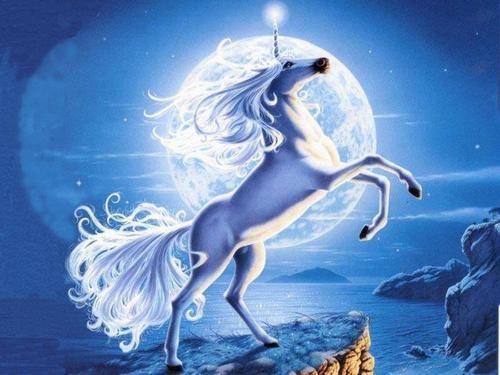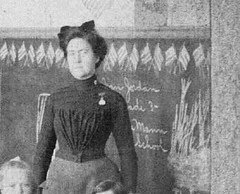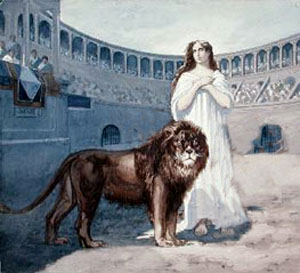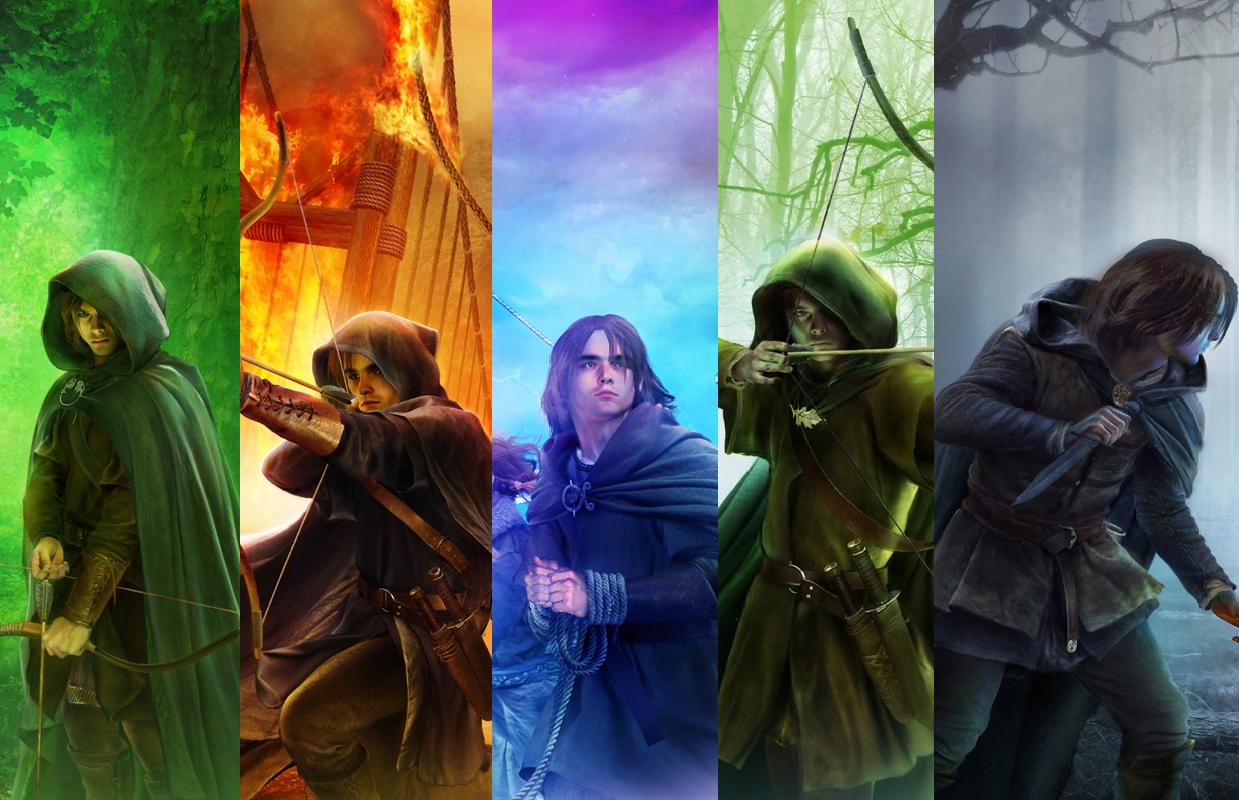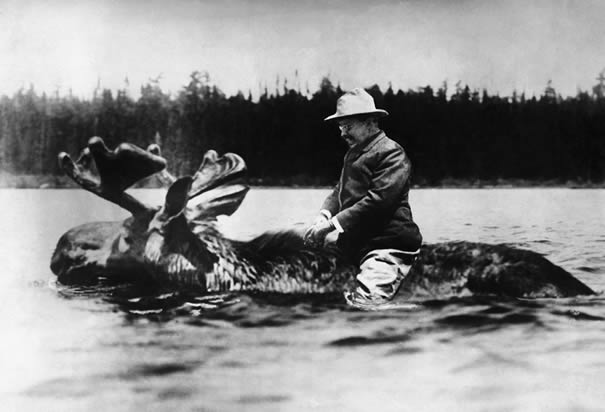I've heard it said that a story is only as good as its villain. Now, I don't necessarily agree with this; after all, some of the most compelling stories I've read don't have a solid antagonist. (
Voyage of the Dawn Treader, Hatchet, Brian's Winter, No. 1 Ladies' Detective Agency, My Side of the Mountain, Anne of Green Gables, and others in that vein.) But it is true that a really good adventure story has to have a really good antagonist--and not just an antagonist, an honest-to-goodness villain.
Off the top of your head, name the most memorable villain from a movie and a book--and then name the least. I'm willing to bet that my top ten villains will probably be fairly similar.
1: Darth Vader.
Probably one of, if not the, most iconic movie/story villain of modern times. We are talking evil and confident about it, not to mention extremely powerful, and kind of fun to watch. He's a scary dude--and wildly unpredictable. What makes him so popular? My takes on this:
First, Vader is not conceited. He does not care about himself. He has an agenda, and he wants it fulfilled. He has a mission to carry out, and he will, no matter how many minions he has to cut down to pull it off. Second, the guy is unpredictable--at least, where he's going to show up next, and he's got just enough charisma to smooth-talk people into going his way. (Note Lando Calrissian in the second movie.) In the third place, he's connected to the hero. You don't want to overuse this tactic, mind you; if you don't do it right, it almost seems cliche. But there's no doubt that the 'I am your father' line is one of the best shockers in movie history. And finally...he repents at the end. There is nothing that tugs at my heartstrings harder than a villain who does a 180 and performs some incredible, selfless act to save the heroes. This is also not a route you want to overuse, but dang, if you can get it to come out right, it really works!
2: Sauron.
All the villains in Lord of the Rings are particularly effective, but I'll be dealing with each one on their own. Here, we focus on Sauron. I'll just say it: when your main villain is nothing but a flaming eyeball at the top of a really creepy tower, you've probably got a winner. At first glance I think Sauron might seem to be a fairly weak enemy: after all, he has virtually no lines in the movie, none at all in the book, and he pretty much just stays at the top of his tower, looking around. But then you look a touch deeper. Everything else in the book is under Sauron's thumb. Saruman is just his puppet. The Ringwraiths are his servants, the Orcs his slaves. Only Shelob isn't under his command--but he considers her his cat!
How does he tick? First, Sauron is a demon--a real demon, from the Catholic tradition. He is completely evil, completely other, and therefore, completely incomprehensible to humans. He's arrogant, and willing to take huge risks if it gives him an advantage. In The Simarillion, he comes to the kings of Numenor, pretending to serve them, and tempts them to their destruction. And of course we all know about the making of the One Ring and what came of that. And it seems like a huge weakness to us--until we consider by how tiny a margin it was that the Ring wound up being destroyed. Spend a few minutes thinking about it, and I bet you--like me--just might end up in a cold sweat.
3: Fu Manchu
I add Fu Manchu for one reason only, as I have never read the books or seen any movies. And the reason is this: everyone knows about Fu Manchu. I don't know precisely how his character ticks, but however it does, the author got it right.
4: Muska
One of Hayao Miyazaki's few unrepentant villains, Muska from Castle in the Sky is probably one of the creepiest bad guys I have ever seen in a cartoon setting. And one of the things that makes him so eerie is the fact that he conceals his real nature for most of the film. Unlike the bombastic general, who never hides his personality, or the pirate captain Dola, who is won over by the young protagonists about halfway through the story, Muska behaves almost kindly to the captive Sheeta--though his kindness is clearly a thin veneer over a threatening demeanor, and the hero Pazu has no trouble at all in singling him out as the real threat. He is smooth, suave, soft-spoken, clever--and power-hungry, vicious, and colder than an Arctic night, perfectly willing to threaten children and even slaughter his own allies to get what he wants.
How does he work? First, he is willing to hide his threatening nature under a pleasant guise. He is soft-spoken, persuading rather than trying to force. He will attempt bribes, and if those don't work, he will subtly threaten those close to the one he is speaking to. Only once before the climactic scene does he allow his lust for the power of Laputa to come through--and that is when a broken-down robot unexpectedly comes to life and starts tearing a fortress apart.
5: The Ringwraiths
These guys scared the living daylights out of me when I read the book, and they weren't any less creepy in the movie. Faceless, almost formless if it wasn't for their hoods and cloaks; sniffing out their prey; lurking on the roads and in the wild areas; and to make matters even better, almost unstoppable. They could be driven away, but there was always the promise that they'd be back for as long as the Ring endured. What makes them even more horrifying is the knowledge that they were once men, who took the nine rings Sauron offered and fell, body and soul, completely under his dominion.
Counting the ways the Ringwraiths work would probably fill a book, but I'll stick to the more obvious ones. They are also other, incomprehensible to the way we think, but they were once men, which carries the horror further along. They are drawn to the Ring and its power, making it nearly impossible for Frodo to escape them while he carries it. Invisibility is no escape from them. In fact, putting on the Ring makes it possible for them to see him--and for him to see them! And finally, there is the way they communicate: in bone-chilling screams that can be heard for miles.
6: The White Witch

Admittedly, she wasn't quite as scary in the movie. But in the book, which is what I'll go by, she was one absolutely terrifying creature. She was seductive, willing to pretend kindness to learn what she wanted from Edmund. In fact, if you read the scene out of context, you might wonder at the cruelty of the dwarf charioteer, and what she might have been planning at first, but then you, like he, would probably be taken in by a pleasant, wealthy lady, wielding power and willing to share it with him. She flatters him constantly, and assures him that, once he brought his siblings, she would adopt all of them as her children, making them princes and princesses--and him High King. Reading the scene in context makes it clear how dangerous she is, and what an awful thing he's done. And then it gets even better. In the book, the wolves she sends after the other children don't get close until after her winter is broken. But she comes across a group of Narnian creatures--several squirrels, an older fox, and I believe a few fauns--celebrating the return of Christmas with a feast. Upon learning that Father Christmas gave them the fare, she turns the whole lot of them into stone. Shortly afterwards, Edmund is rescued from the Witch right out from under her knife. And then, she is able to demand--and get--repayment from Aslan himself!
The White Witch is less subtle than some villains, but she is subtle enough. She tricks at first, flatters, and seduces. She only turns nasty when the situation looks like it may not be completely under her control. She's clever and in control, able to disguise herself instantly when the rescue party arrives. She even has a sort of legitimacy to her: it was written in the Deep Magic that she was to kill traitors. She controls a huge host of all sorts of creepy, terrifying creatures, who fawn all over her. And she is allowed to kill Aslan, as well. Doesn't get much creepier than that.
7: Cinderella's Stepmother.

Admittedly, this one seems pretty tame in comparison to the others. And if I hadn't seen the movie recently, I probably wouldn't have even considered her. But I did. And I noticed something that I hadn't had before. The Stepmother is as scary as all get out, all the more so because she doesn't lose her cool. She keeps her temper at all times, constantly finding ways to turn a disappointment into an advantage. When faced with the fact that all eligible girls in the kingdom are invited, she agrees that yes, Cinderella may go--if she finds something to wear, and if she can finish the mountain of chores that she immediately piles on. Then, when it turns out that, despite the extra work, Cinderella does have a dress, the Stepmother agrees that yes, she may go, and compliments the dress in such a way as to encourage her daughters to tear it to shreds. She's on target enough to realize that there's something familiar about the mystery woman at the ball, and figures out who it was much faster than I probably would have in her situation. In fact, throughout the movie, the Stepmother is so on top of things that's it's a small miracle everything works out for Cinderella at all.
8: Klaus Wulfenbach
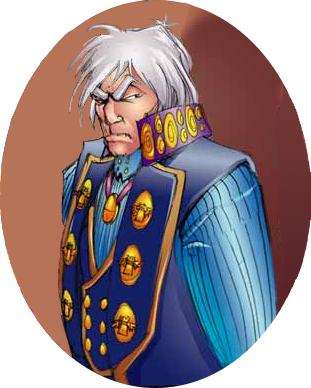
Fans of the Girl Genius comic will recognize this fellow right away. To be fair to him, he doesn't really believe he's a villain. He thinks he's on the side of the angels. He believes his quirks--like dissecting the brains of fellow sparks and the willingness to destroy an entire town to get one person--are just quirks. He knows he is right, and he knows he will win. Wulfenbach refuses to give up, no matter what his situations. Whether he's in control on his airship base, on the ground in hostile territory that is rapidly becoming more hostile, busted up in the hospital, or even wasped and under the control of the Other, you never know what he is going to do next. He's a bit of a megalomaniac--probably has to be in his situation--but, while he occasionally will make speeches, he's usually doing something at the same time, and almost never what you'd expect him to be doing. And he always seems to be able to come back for yet another round, no matter what's happened to him already.
9: Saruman

Ah, yes. There's always got to be someone we love to hate. For me, it's this guy. While a repentant villain may tug at my heartstrings, the good guy who goes bad is an object of either disgust or disdain, and he pulls up both. He also pulls up some fairly healthy feelings of alarm when he comes on, because, dislike him as I do, it's quite clear he's no slouch, and going bad makes him someone to be reckoned with. Whether it's his pride-ridden fall from grace using the Palantir and being caught by Sauron, his skin-crawling experiments that result in the Uruk-Hai, his brutal felling of the living trees in Fangorn or his gleeful delight in the nightmare foundry he sets up beneath Orthanc, he manages to convince everyone that he is in control--even when he's not. Even now, his little speech to send his Uruk army to battle gives me chills, even after watching the movie something around fifty times. And while the movie does a bit of a cop-out, killing him before the destruction of the Ring and skipping his real end, the book gives him the chance to pull some real nastiness even after Aragorn is crowned and all should be right in the land. Admittedly, by then he has degenerated from the most powerful and respected wizard in Middle Earth to essentially a low-class mob boss--but he still does a real number on the Shire before Frodo, Sam, Merry and Pippin arrive to set things right.
10: The Joker

If they get creepier than this guy, I have yet to see it. Though not a complete comics aficionado--I prefer indie webcomics to most of the stuff the mainstream puts out--I have read enough stories with this guy featured to know he more than makes my list. Yes, he's insane, but he's not just insane. Someone who is just insane is as likely to start thinking of himself as a chicken or Lord Vetinari (Terry Pratchett's Discworld) as he is to turn into a bloodthirsty psychopath willing to kill anyone who crosses his path. For me, Joker is creepy because you don't know if he actually has a weakness--or when he is willing to turn any weaknesses he has into strength. He is wildly flamboyant, but more inclined to do, rather than to talk, which is a real trip point for a lot of comic-book baddies. His sense of humor, if you can really call it that, is what makes him so eerie. Frankly, whenever I read those books, I keep wishing that there was someone in the area not so principled as Batman, a lot faster than the Joker, and willing to make deadly use out of, say, three feet's worth of well-sharpened Toledo or Damascus steel.
There's certainly more to be said on the subject, and I plan to. Tomorrow, I'm going to detail the least effective villains from book and movie history. If I've missed someone's favorite bad guy, let me know--and then tell me why you find him (or her) so interesting.










